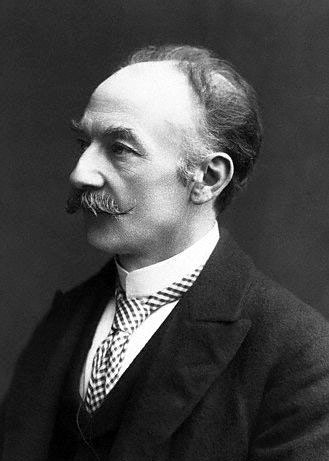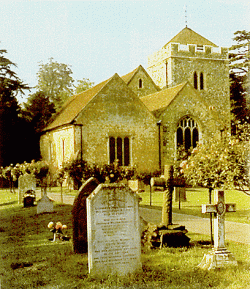Critical Analysis of Elegy for Jane:
This poem reads like a eulogy that is read out at a funeral. This is most evident in the loving detail with which the poet upholds Jane’s character for his readers to see. However, it is not a eulogy. It is less formal, and the poet is alone at Jane’s grave when he voices all these thoughts of his. He also feels guilty for having loved Jane so much, for he is not her father or her lover. Yet he shows his readers that it is not wrong to love a student or to mourn the death of such a young person. He takes an interest in Jane because she is manic depressive-like he was in his young age as well. He describes her joyful moods, which he feels are more appropriate for her lover to have noticed than him. He also describes her sorrowful moods, when she should have been cheered up by her father rather than by him. But instead, it is he – a mere teacher – who notices all these moods of her with more attention than anyone else. What fascinates him the most about Jane is the strange kind of connection she seems to have with nature. Nature rejoices with her when she is happy. Again, it is nature that reflects her sorrow when she is in a bad mood. It is as if nature mimics her every thought, and this is what endears Jane to the poet. Even though he voices his guilt for loving only one student of his above all others, and loving her even more than her close companions, this poem is mainly aimed at showing us how beautiful the relationship between a student and a teacher can be. A teacher need not watch over a student only in the classroom, but everywhere else as well. A teacher’s influence can spread all over a student’s life. Similarly, a student can reward the teacher for his guidance by giving him the respect he deserves. Jane had done just that – waiting around sometimes to ask his advice and at other times to thank him. That is why he cannot help but love Jane and why her death upsets him so much. He wishes he could bring her back to life because he misses having such a devoted student like her.
Poetic Devices in Elegy for Jane:
Rhyme scheme:
The poet does not use any identifiable rhyme scheme in any of the stanzas in “Elegy for Jane”.
Rhetorical devices:
1st stanza:
Simile:
This rhetorical device is used when an overt comparison is made between two different things. In this stanza, the poet uses the device of simile in line 1 when he compares the locks of hair that used to be curled all over Jane’s neck with tendrils, and also uses the word “as” while making this comparison.
Personification:
This rhetorical device is used to bestow human qualities on something that is not human. In this stanza, the poet uses the device of personification with respect to the syllables that make up the words that come out of Jane’s mouth. He imagines the syllables jumping up and reaching for Jane to take hold of them.
2nd stanza:
Metaphor:
This rhetorical device is used when a covert comparison is made between two different things or ideas. In this stanza, the poet uses the device of metaphor when he compares Jane with a wren bird.
Personification:
This rhetorical device is used to bestow human qualities on something that is not human. In this stanza, the poet uses the device of personification with respect to the shade of the trees. He imagines the shade singing along with Jane’s song. He also uses the device of personification with respect to the leaves of the trees. He imagines them whispering to each other and then kissing.
4th stanza:
Apostrophe:
This rhetorical device is used when a poet addresses his or her poem to an absent audience. In this stanza, the poet uses the device of the apostrophe as he speaks directly to Jane, who we know is already dead and therefore cannot possibly be present in front of him.
Simile:
In this stanza, the poet uses the device of simile when he says that Jane used to look like a fern as she stood around waiting.
5th stanza:
Metaphor:
In this stanza, the poet uses the device of metaphor when he compares Jane with a pigeon.
Stanza-wise Annotation:
Please note: N= noun, V=verb, Adj=Adjective, Adv=Adverb, P=Preposition, Ph V=Phrasal Verb
1st stanza:
Limp (Adj): Not stiff in structure
Damp (Adj): Slightly wet
Tendrils (N): Plural form of the word “tendril”, that is, a slender thread-like appendage of a climbing plant, often growing in a spiral form, which stretches out and twines round any suitable support
Sidelong (Adj): Directed to or from one side; sideways
Pickerel (N): A condition marked by a wild irrational staring of the eyes
Syllables (N): Plural form of the word “syllable”, that is, a unit of pronunciation having one vowel sound, with or without surrounding consonants, forming the whole or a part of a word
2nd stanza:
Wren (N): A small short-winged songbird found chiefly in the New World
Mould (N): Form or shape, especially the features or physique of a person or the build of an animal
Bleached (V): Past tense of the word “bleach” that is, to deprive of vitality or substance
3rd stanza:
Cast down (Ph V): Lower someone’s spirits; make downhearted
Scraping (V): Present participle form of the word “scrape”, that is, to rub or cause to rub by accident against a rough or hard surface, causing damage or injured
Stirring (V): Present participle form of the word “stir”, that is, to move a spoon or other implement round and round in (a liquid or other substance) in order to mix it thoroughly
4th stanza:
Sparrow (N): A small finch-like Old World bird related to the weaver birds, typically with brown and grey plumage
Fern (N): A flowerless plant which has feathery or leafy fronds and reproduces by spores released from the undersides of the fronds
Console (V): Comfort (someone) at a time of grief or disappointment
Moss (N): A small flowerless green plant which lacks true roots, growing in low carpets or rounded cushions in damp habitats and reproducing by means of spores released from stalked capsules
5th stanza:
Maimed (Adj): Wounded or injured so that part of the body is permanently damaged
Skittery (Adj): Restless; skittish
Rights (N): Plural form of the word “right”, that is, a moral or legal entitlement to have or do something
Central Idea of Elegy for Jane:
The poet describes the oddities of Jane’s behavior, for those were the things that made her who she was. He remembers all this after she has died, and only then comes to realize how much he had loved her.
Themes of Elegy for Jane:
The similarity between poet and Jane: Roethke had many, many students. Yet he singles out just one of them to write a poem about. This is bound to raise some questions. However, those questions are answered in the poem itself. Older people often take an interest in those who remind them of a younger version of themselves. This seems to be the case here. Roethke showed manic depressive traits from quite a young age, and so did Jane apparently. He describes her as being delighted at something so simple as her own thoughts, and her song as being cheerful enough to revivify nature. But he also shows how her depression alienated her from everybody at times. These are all classic signs of a manic-depressive personality. Hence it is entirely possible that Roethke took an interest in Jane because she was manic depressive-like him.
Mourning as the right of a select few: Towards the end of this poem, Roethke says that he has no right to mourn the death of Jane. After all, he is only her teacher. He says that mourning is appropriate only for family or romantic partners. This is an odd notion, yet one that many people share. Hence it is only human for Roethke to express his reservations about the subject matter of this poem.
The tone of Elegy for Jane:
The tone of this poem is a bit ambiguous. Of course, the poet is extremely saddened by Jane’s death, but this is most apparent only in the last stanza. In all the previous stanzas, the poet seems to be rather pensive when he remembers all the things that Jane used to do. In fact, while indulging his nostalgia, the poet cannot be said to be entirely unhappy. It is clear that his love for Jane makes his memories of her joyful to recount.
Conclusion:
“Elegy for Jane” is a poem that cannot help but touch readers deeply. We have all mourned for our loved ones at some point in time or another. Hence the poet’s mourning for Jane is very relatable.
Some online learning platforms provide certifications, while others are designed to simply grow your skills in your personal and professional life. Including Masterclass and Coursera, here are our recommendations for the best online learning platforms you can sign up for today.
The 7 Best Online Learning Platforms of 2022
- Best Overall: Coursera
- Best for Niche Topics: Udemy
- Best for Creative Fields: Skillshare
- Best for Celebrity Lessons: MasterClass
- Best for STEM: EdX
- Best for Career Building: Udacity
- Best for Data Learning: Pluralsight













